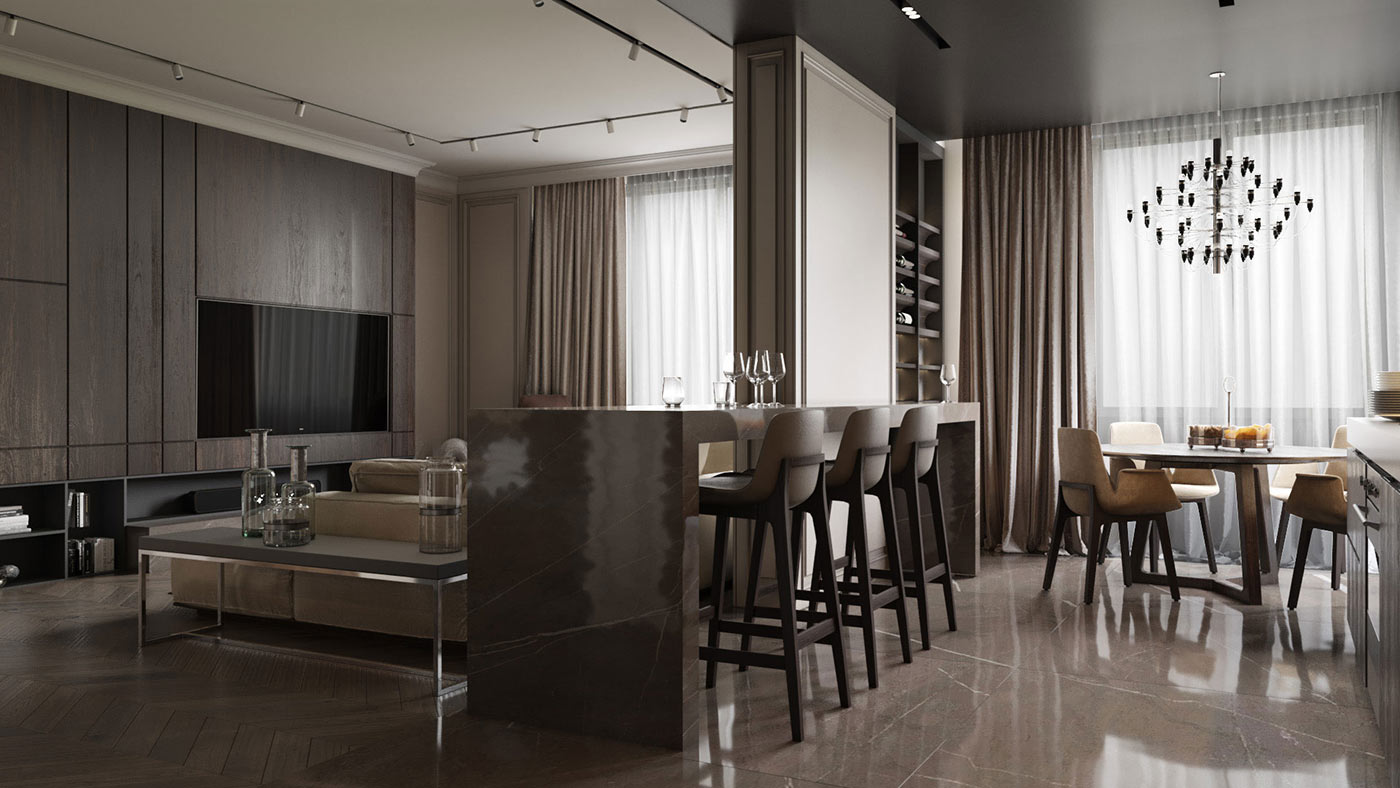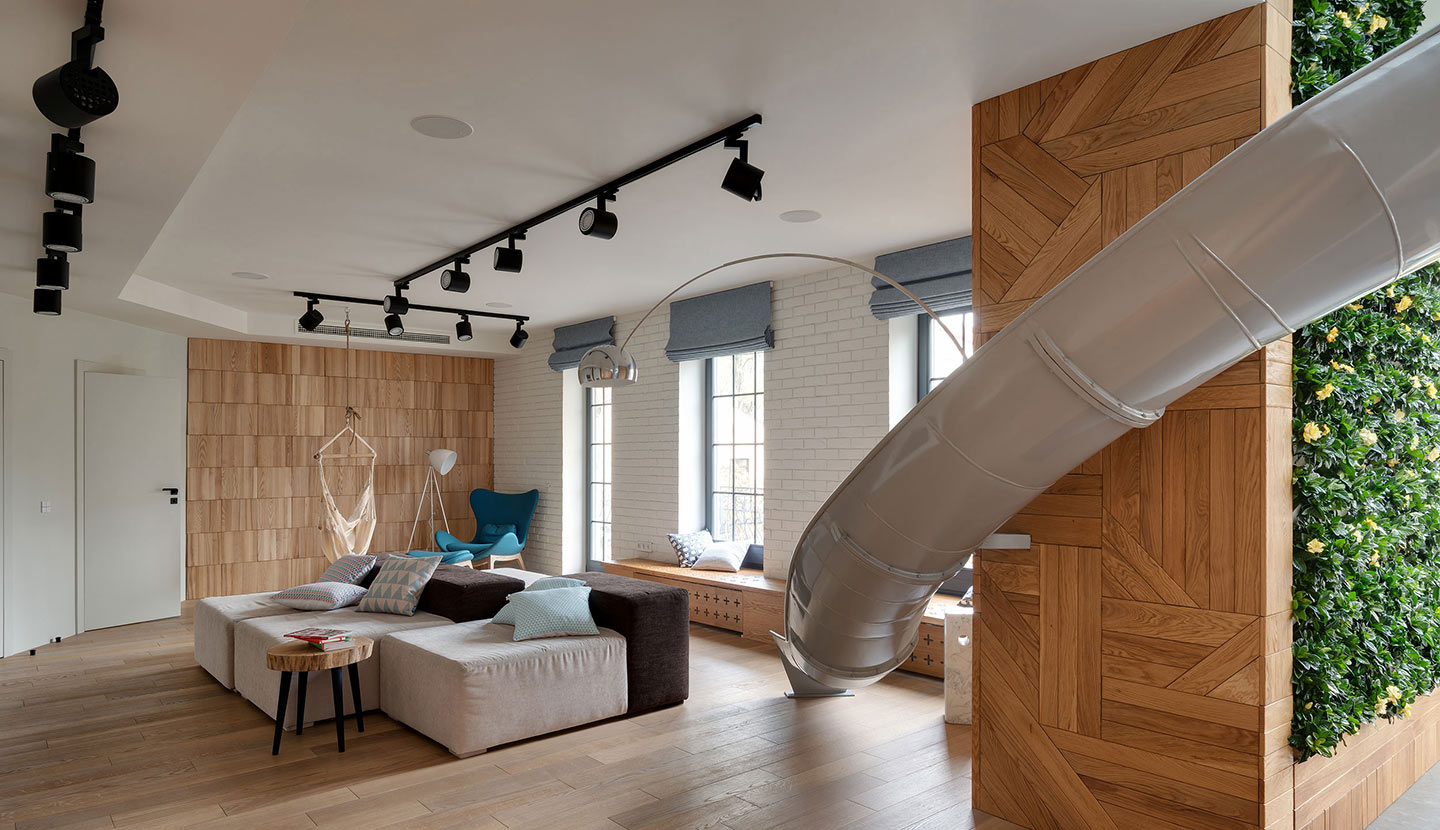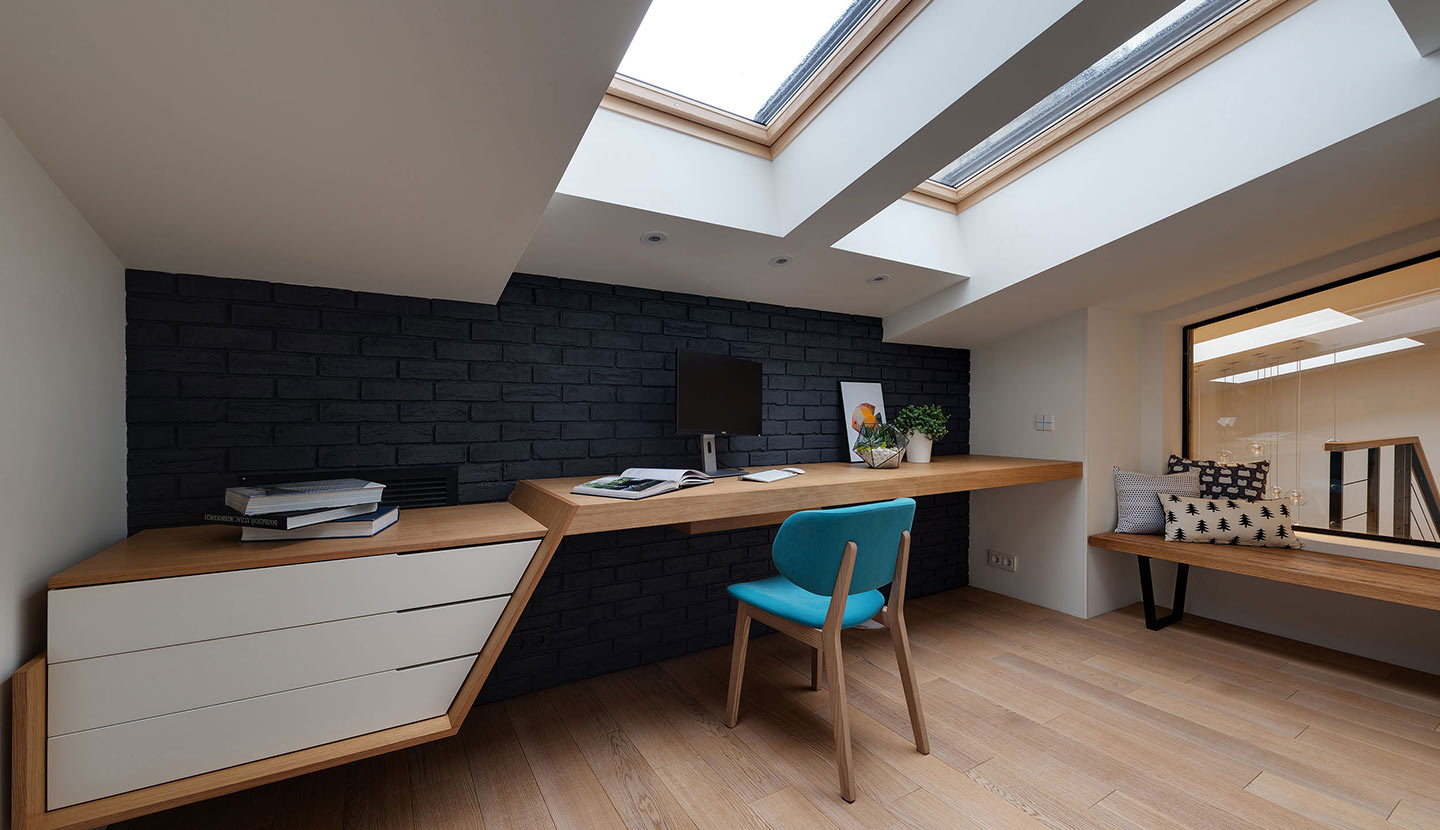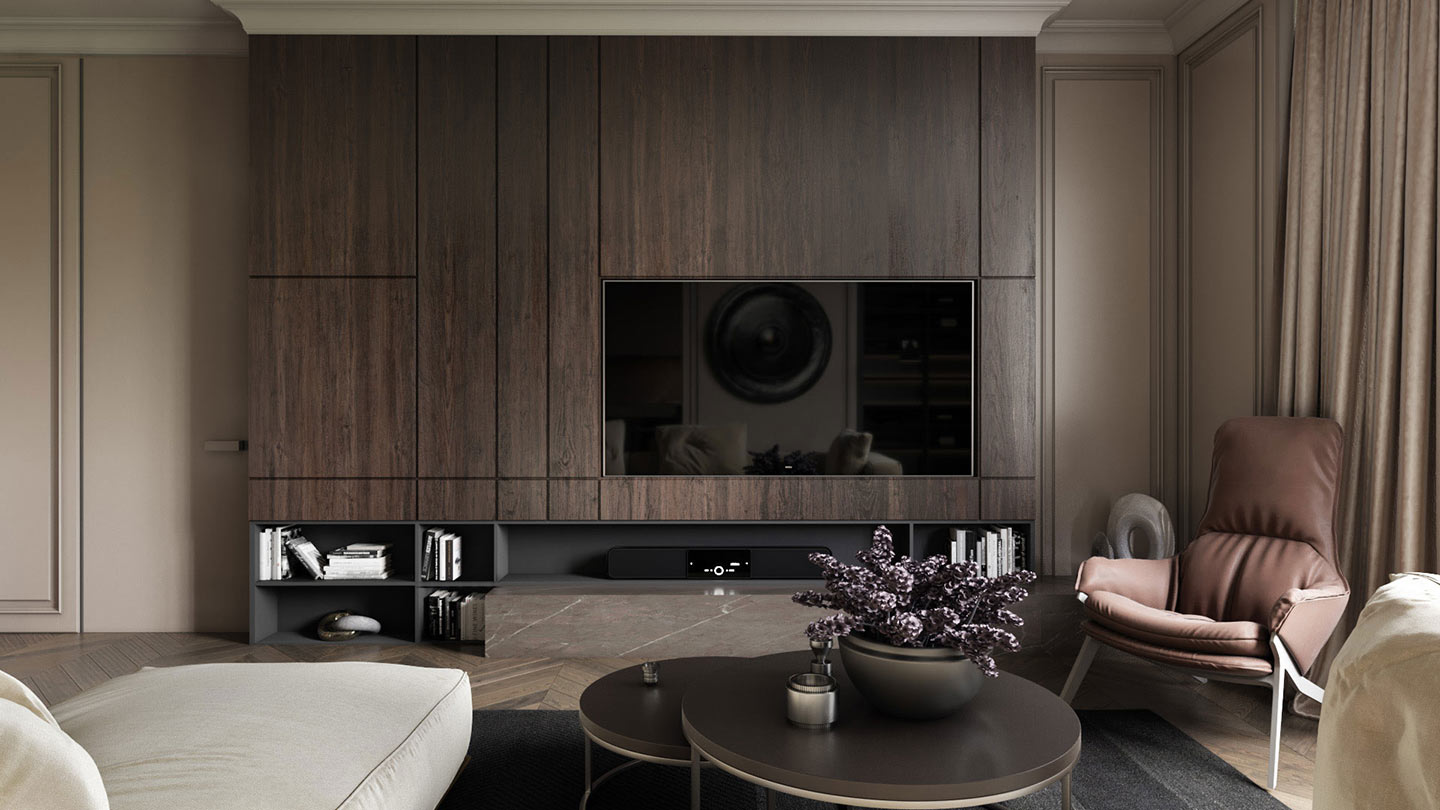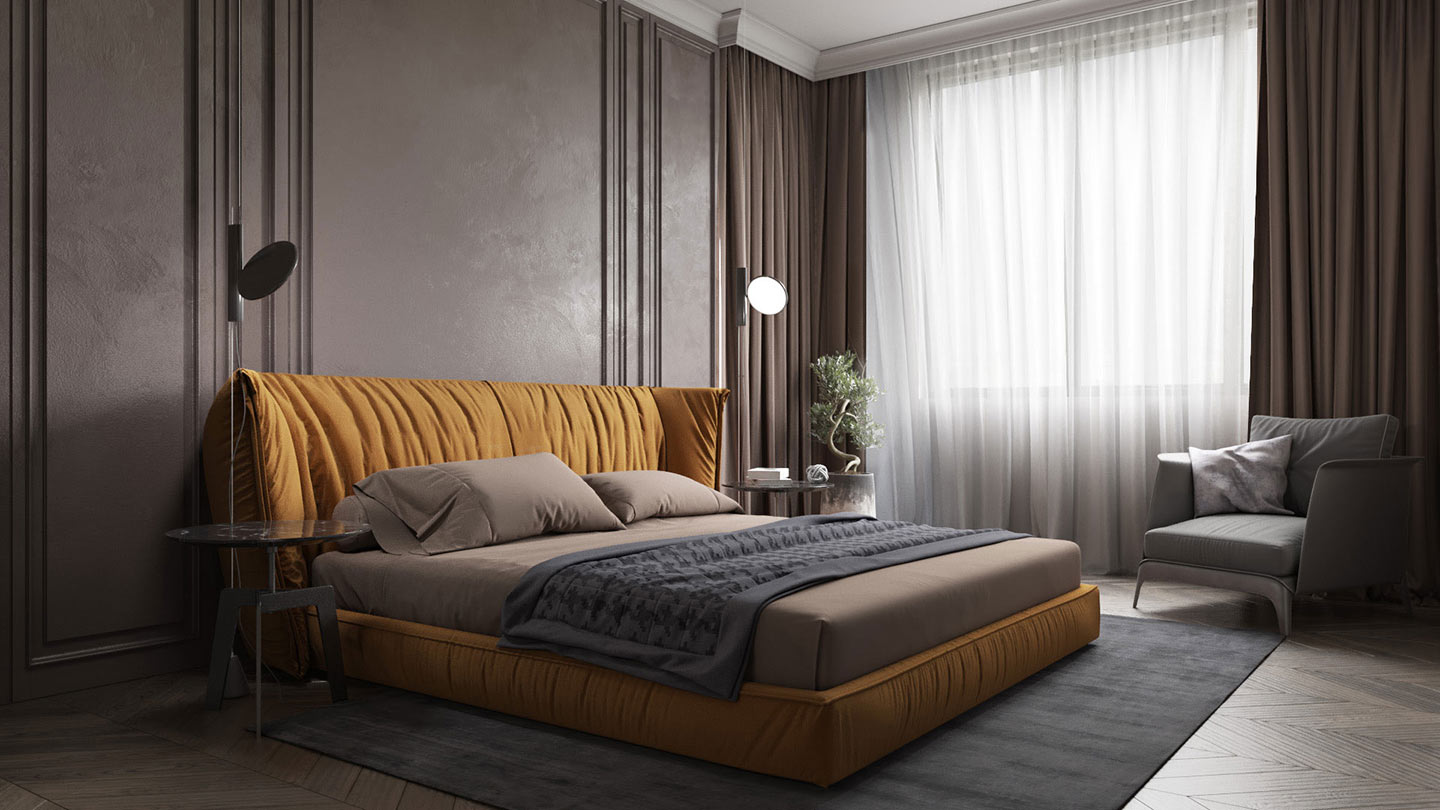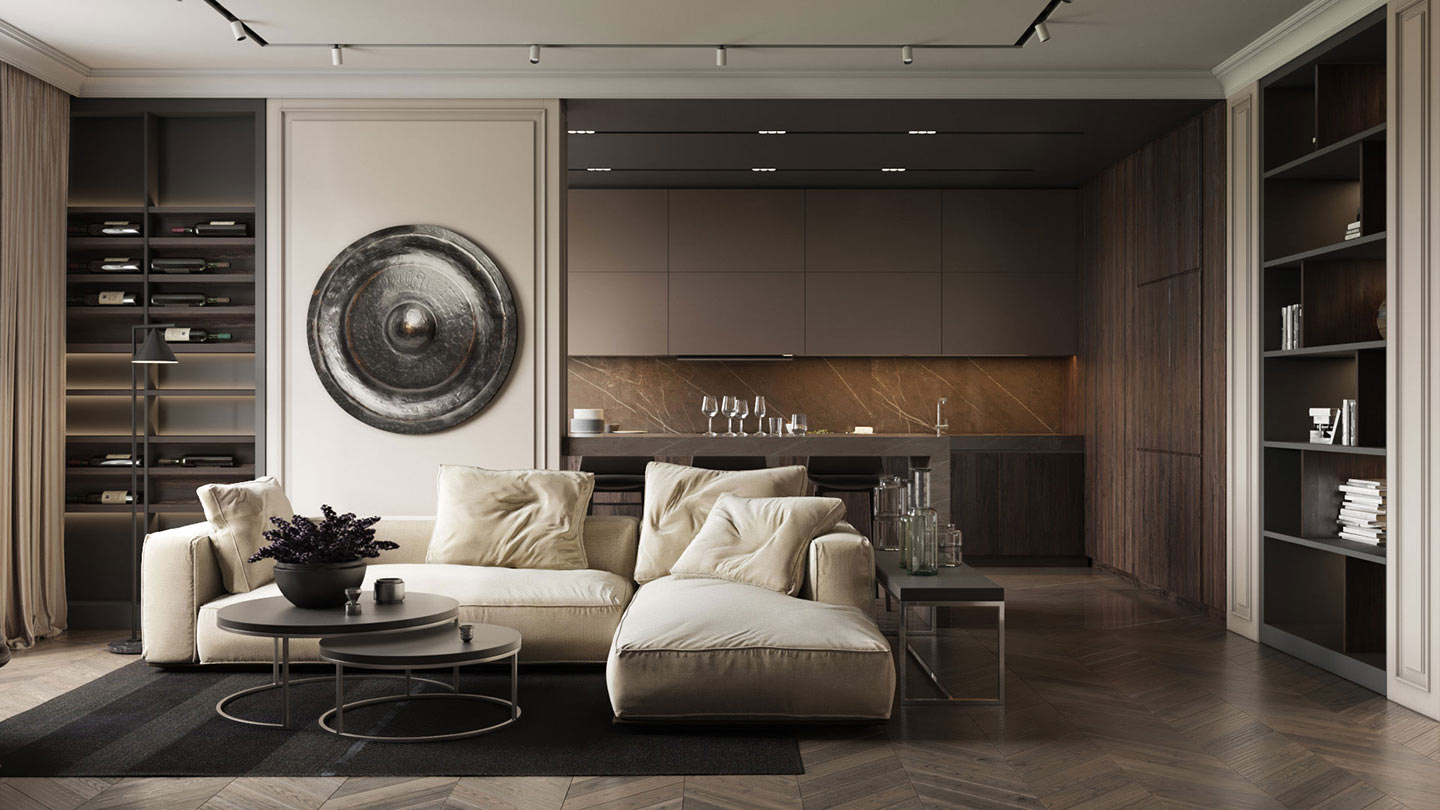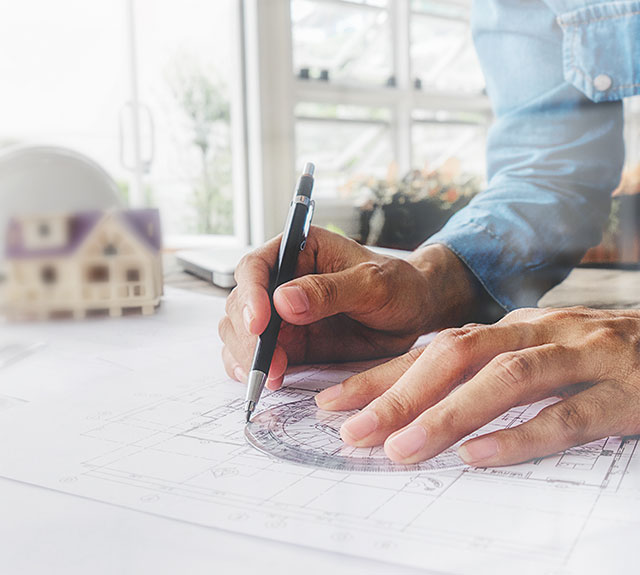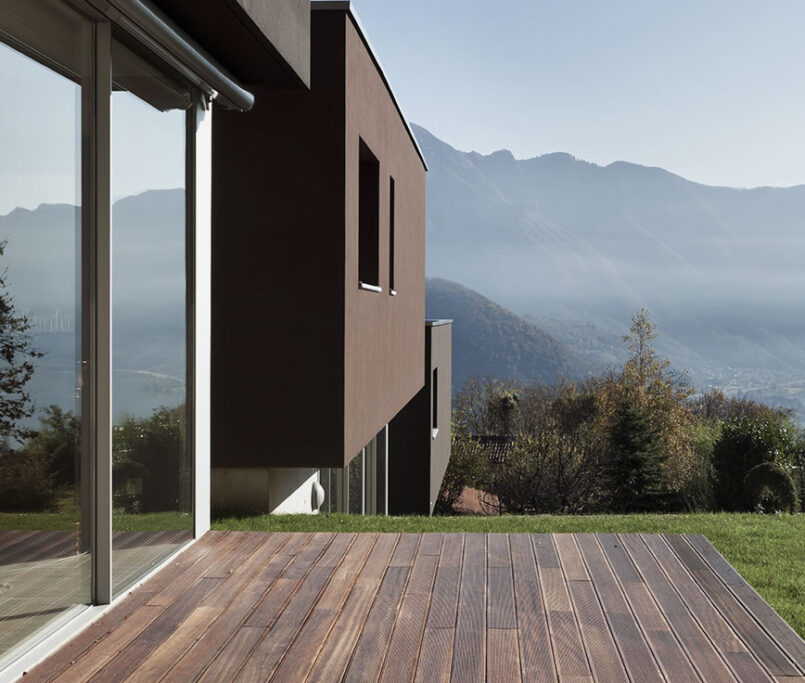Monsoon is the true stress test for interiors. High humidity, water seepage, and constant moisture in the air push most materials — especially wood — to their limits. Swelling doors, sticky drawers, bubbled laminates, and fungal smells aren’t manufacturing defects; they’re symptoms of poor planning or the wrong material choices.
At Aakriti Perspective LLP, where we work extensively with both natural and engineered materials, we’ve seen firsthand how the monsoon exposes every shortcut. Here’s a straightforward guide to why wood misbehaves, how you can fix it, and what makes the difference between woodwork that fails and woodwork that lasts.
1. Swelling and Expansion
What’s happening:
Wood absorbs moisture from the air, especially during peak humidity. Engineered boards and softer woods swell the most — even a 1mm change can jam a drawer or misalign a shutter.
Where it shows up:
- Wardrobe doors that won’t close
- Table edges softening or bulging
- Drawers getting stuck or misaligned
How to fix it:
If using solid wood:
- Use hardwoods like teak or sheesham.
- Avoid rubberwood, pine, or unseasoned timber.
- Always apply a protective finish like PU or melamine.
If using boards:
- Replace MDF or commercial ply with HDMR.
- Most importantly: seal all exposed edges — not with polish, but with proper edge banding.
2. Warping and Bending
What’s happening:
Uneven moisture absorption causes one side of a panel or plank to expand more than the other, leading to a gradual bend or twist.
Visible signs:
- Shutters that curve or lean
- Shelves that sag in the middle
- Panels separating from walls
How to fix it:
For solid wood:
- Use seasoned hardwood only.
- Always apply the same finish on both sides of a panel.
- Avoid large, unbroken surfaces in wood without reinforcement or battens.
For HDMR or engineered boards:
- Always use balanced lamination.
- Store sheets flat during fabrication.
3. Delamination and Bubbling
What’s happening:
Moisture enters from exposed edges or poorly sealed corners, lifting the laminate or bubbling the paint.
Commonly seen in:
- Kitchen cabinets
- Painted shutters
- Wall panels near bathrooms or balconies
Prevention:
- Use edge banding.
- At Aakriti, we use German edge banding machinery for precision sealing.
- Manual edge taping tends to peel or allow moisture in.
4. Fungal Growth and Odor
What’s happening:
Dampness trapped inside closed storage units promotes mold. This is worsened when low-grade plywood or untreated softwoods are used.
Prevention:
- Choose moisture-resistant HDMR.
- Avoid rubberwood or soft pine in closed spaces.
- Add ventilation cut-outs or louvers.
- Leave an air gap between cabinets and external walls.
5. Cracking and Shrinkage (After Monsoon)
What’s happening:
Once humidity drops, moisture evaporates from the wood or board, and the material contracts. If it wasn’t properly acclimatized, it may now crack, shrink, or form gaps.
Prevention:
- Let wood or boards rest at site before final finishing.
- Use PU or melamine coatings.
- Avoid rigid joinery — use floating panels.
Quick Material Reference
- Material – Monsoon Suitability – Notes
- Teak / Sheesham – Excellent – Use seasoned; resistant to moisture and fungus
Rubberwood / Pine – Poor – Swells easily; prone to mold - HDMR – Very Good – Needs proper edge banding; ideal for wardrobes and panels
- MDF / Particle Board – Poor – Avoid in humid conditions
- Commercial Plywood – Moderate – Use only in dry zones; must be sealed and elevated
Why Edge Banding Matters More Than Waterproof Polish
Water doesn’t just attack from the surface — it enters from the edges first. That’s why polish alone won’t help.
At Aakriti, we’ve adopted machine edge banding as a standard across our projects. With our German edge banding line, we deliver:
- Uniform, heat-sealed finishes
- Higher resistance to peeling and warping
- Clean, gap-free edges on all boards
Final Thoughts
Wood isn’t the problem — unprepared wood is.
Whether you’re using natural timber or engineered boards, longevity during the monsoon depends entirely on smart choices:
- Choose the right species (or board grade)
- Finish and seal edges properly
- Avoid shortcuts in joinery and site handling
The monsoon may be messy — but your interiors don’t have to be.

